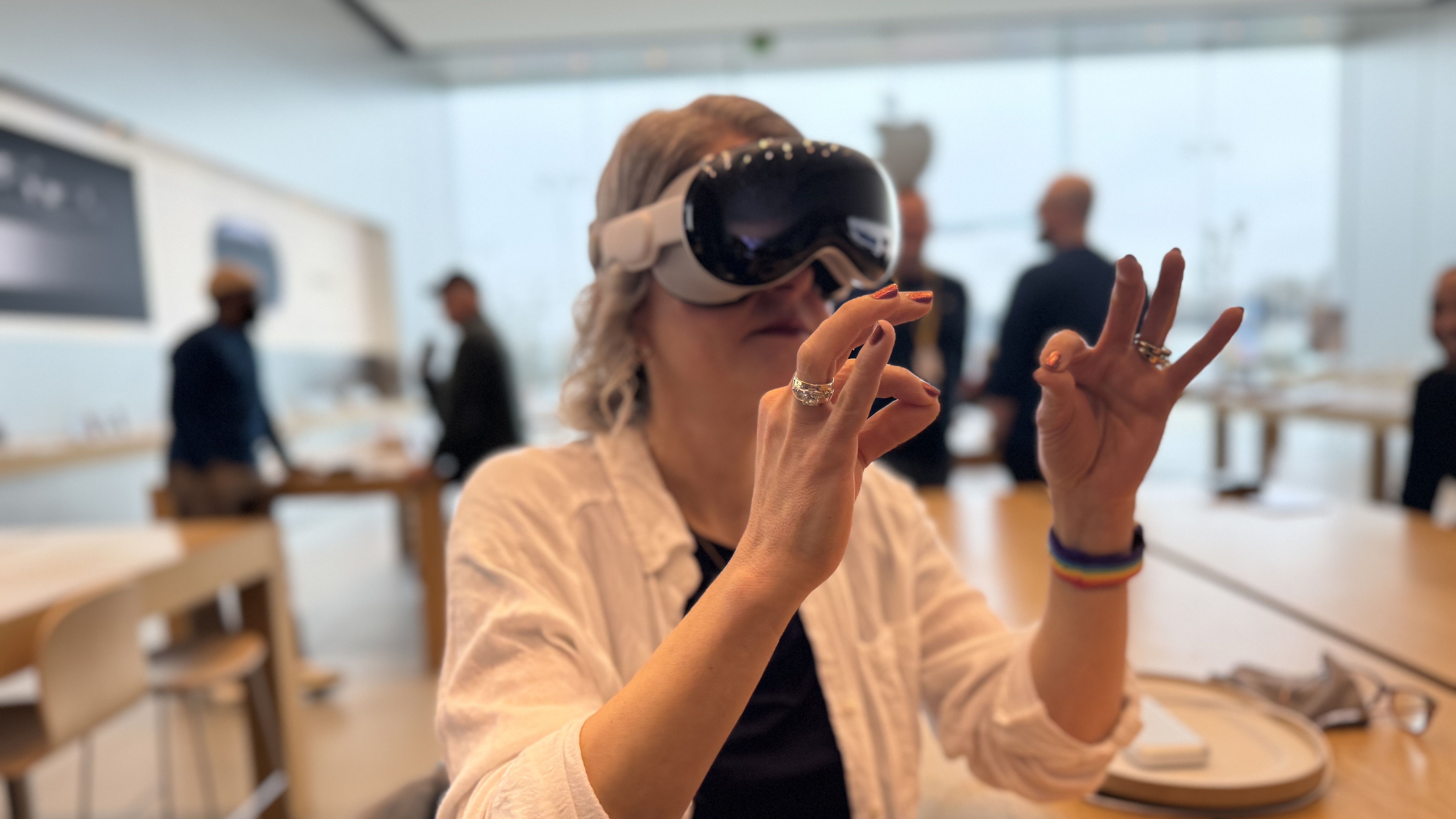
Apple has only just entered a whole new category with the launch of the Apple Vision Pro, its first foray into new territory in a decade, but it might already be looking at entering another. Reports continue to swirl to suggest that Apple is readying a new smart ring, perhaps dubbed Apple Ring, that will compete with offerings from Samsung's Galaxy Ring, the Oura Ring, and others. And while that rumor continues to gather pace, it turns out that there might be more to the Apple Ring than just helping you track your workouts and how well you're sleeping.
That's because a new Apple patent appears to suggest that Apple might not just want people to buy one new Apple Ring — it might expect people to buy ten of them, one for each finger. Not so that you can have super duper accurate information about whether or not you tossed and turned all night but because the ring(s) could be used to help people get more done when wearing their shiny new Apple Vision Pro.
The theory? Such rings would provide additional sensors and even haptics that would make working in augmented reality — read, spatial computing in Apple's parlance — not only more fulfilling but more accurate. The idea is a strong one, with the combination of a sensor-laden smart ring and high-end mixed reality headset potentially able to create a new way to interact with apps and their content. And in a world where Apple clearly hopes people will use its headset at work and when learning things like intricate procedures required in a hospital, more accuracy is never a bad thing to have.
Finger-Mounted Device with Sensors and Haptics
The patent, first spotted by Apple Insider, describes a "Finger-Mounted Device with Sensors and Haptics "that could be used in lieu of a glove that "may have sensors that detect user hand motions." Instead of a clumsy glove that could restrict movement and make it difficult for the precision motion-sensing that the Apple Vision Pro might track, Apple says that something like a finger-mounted device could be a better option. It's important to remember that Apple's patents, like those from other companies, are purposefully vague to ensure that they could apply to a wide swathe of potential applications.
Apple's patent explains that something similar to a smart ring "may be used to gather input from a user's fingers as the user interacts with surfaces in the user's environment and may be used to provide clicks and other haptic output during these interactions."
The patent suggests that Apple isn't only interested in finger movements but also how much pressure those fingers may apply to objects that aren't in the physical world. There is also mention of a finger being used as a pointing device similar to a joystick.
As impressive as the Apple Vision Pro has proven since its launch on February 2, its lack of a controller is both a huge benefit and a hindrance. The feeling of being able to touch what's in front of you is about as futuristic as an augmented reality experience gets. But other headsets from the likes of Meta have controllers that allow for precise control of objects and, importantly, games. The lack of a controller has been suggested as a key reason that AR and VR gaming might not be a strong point of Apple's headset moving forward.







